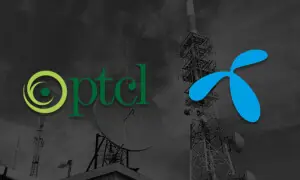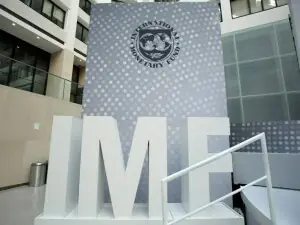Women’s mobile ownership, internet use adoption in Pakistan: Family approval, affordability, literacy continue to be key barriers: report
ISLAMABAD, Family approval, affordability, and literacy continue to be key barriers to women’s mobile ownership and internet use adoption in Pakistan, GSMA’s latest Mobile Gender Gap report revealed.
Pakistan has reported a significant gender gap of 38 percent in both mobile ownership and mobile internet usage. This disparity is the widest in Asia for mobile ownership and the second highest in the region for mobile internet usage, following Bangladesh.
Gender gaps in smartphone ownership also vary across survey countries and are widest in Pakistan (49 percent), Bangladesh (43 percent), and Nigeria (38 percent).
Although the country has been able to narrow these divides considerably over the past six years – with gaps in mobile ownership and internet adoption reduced from 45 percent and 63 percent respectively in 2018 – the persistent digital divides call for meaningful interventions.
Affordability, literacy and digital skills, and safety and security are three of the biggest barriers to women’s mobile adoption globally. However, in Pakistan, family approval is an additional significant obstacle.
In Pakistan, at least 23 percent of female mobile internet users (compared to 5 percent of male mobile internet users) use someone else’s mobile phone to get online. In fact, 35 percent of female mobile internet users in Pakistan report they cannot use it more because the phone they use to access the internet is shared (compared to only 14 percent of male users).
While somewhat stable presently, handset prices have seen a sharp spike in recent years due to a steep rise in the dollar exchange rate, import bans, and excessive taxes.
“Excessive connectivity costs continue to perpetuate gender digital divides in Pakistan, hurting the national digital agenda and slowing the journey to Digital Pakistan,” said CEO Jazz Aamir Ibrahim while commenting on the report’s findings.
He added that the absence of installment plans, a predominantly prepaid market, and the prevalence of basic and feature phones are contributing factors to the stubborn digital inclusion gaps in the country.
“To stop affordability from being a key barrier to digital inclusion in Pakistan, we at Jazz have taken several steps, including low-lost 4G handsets called Digit4G, mobile installment plans, and affordable tariffs,” Aamir informed.
“On the service side, a more rational taxation regime could significantly improve Pakistanis’ digital affordability, he added, stressing that about 35 percent of taxes levied on a common cellular subscriber are amongst the world’s highest.
“We continue to advocate for either complete abolishment of the 15 percent current withholding tax, or at least its reduction to 8 percent as per the original Finance Act 2021,” he said.
Withholding tax or advance tax, which was previously charged at 12.5 percent, was reduced to 10 percent in the Finance Act 2021, with the rate slated for further reduction to eight percent for the following years. The Supplementary Act, however, increased it to 15 percent.
“In a medium- to low-income household, a teenage boy is more likely to have a smartphone than a teenage girl. So, while affordability – still a key roadblock to digital inclusion – should apply to both, it doesn’t,” highlights Aamir.
The report corroborates this, identifying family disapproval as the second key cause of women’s digital exclusion in Pakistan, which deprives women of the opportunity to significantly contribute to the economy.
“To change this mindset, we reach out to households through a rural development program, talking to the families about the benefits of mobile phones and internet for women, while diffusing any misconceptions they may have around it,” Aamir said.
He added that Jazz is a huge proponent of a smartphone in every hand, broadband in every home, and a QR code in every local store to push the digital agenda of Pakistan and that benefits of technology are extended to all Pakistanis equally.
A striking example of how social norms adversely affect women’s digital inclusion in Pakistan is the prevailing mindset where both men (42 percent) and women (28 percent) consider mobile internet more important for men, with these views consistent across urban-rural locations and age groups.
“These findings are concerning especially given that once women start using mobile internet, they tend to see the benefits to a similar extent as male users, with the vast majority of both male and female users in Pakistan and other survey countries reporting it has a positive overall impact on their lives,” the report said.
Copyright Business Recorder, 2024






















Comments
Comments are closed.